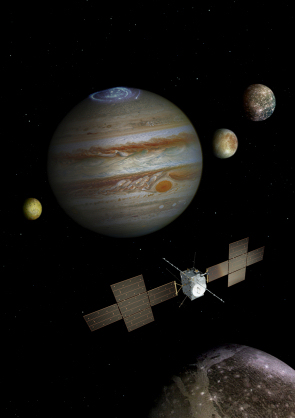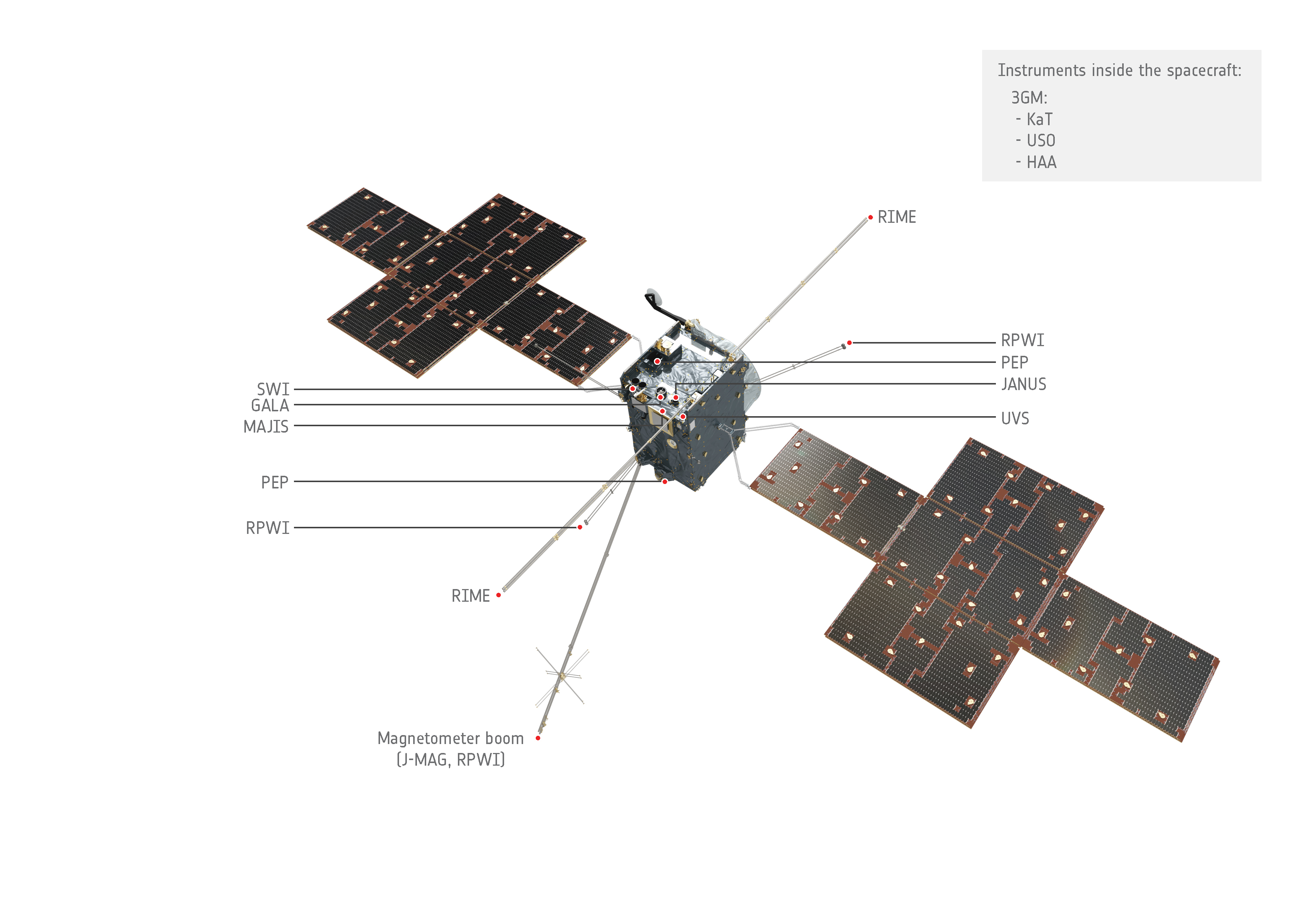Mission
Several present and future planetary missions are designed for exploration of the surfaces and atmospheres of different planetary objects in our solar system. One of the key scientific objectives of these missions is the investigation of the formation of the solar system and its evolution to its present state.
This includes the investigation of the exchange of material between planetary surface and the exosphere, as well as all kinds of space weathering processes. Measurements of the chemical composition of both, the atmospheres and the surface material, are crucial information to expand our knowledge about the origin of the solar system and for a better understanding of processes in planetary evolution. Additionally, these data allow the reconstruction of planetary climate, which may be of primary importance in the search for past or present life.
The JUpiter ICy moons Explorer (JUICE) is such a space mission, which will explore the Jupiter system as a miniature Solar System in its own. JUICE is the first large-class mission in ESA's Cosmic Vision 2015–2025 programme. JUICE will spend at least three years making detailed observations of the giant gaseous planet Jupiter itself, its intense magnetosphere and the plasma interaction with the moons. Furtermore, JUICE will study three of Jupiter’s largest moons, Ganymede, Callisto and Europa, which are believed to harbour subsurface oceans, as planetary objects and potential habitats. Thereby, JUICE will be the first spacecraft ever to orbit a Moon (Ganymede) of a Giant planet. The current trajectory of the JUICE spacecraft foresees a flyby velocity of 4 km/s at Europa, other flybys are in the range of 1 up to 7 km/s and orbital velocity in Ganymede orbitsis around 2 km/s.

By understanding the planetary system Jupiter and its moons, and unravelling its history from origin to the possible emergence of habitable worlds, a better understanding will be gained as to how gas giant planets and their satellites form and evolve. Most important, new light will be shed on the potential habitats in icy worlds, with consequences for the emergence of life in the galactic neighbourhood and beyond. Thus, the overarching themes for JUICE has been formulated as:
- The emergence of habitable worlds around gas giants and
- The Jupiter System as an archetype for gas giants
In order to find answers, JUICE has defined the following main goals:
- Characterise and determine the extent of sub-surface oceans and their relations to the deeper interior.
- Characterise the ice shells and any subsurface water, including the heterogeneity of the ice, and the nature of surface-ice-ocean exchange.
- Characterise the deep internal structure, differentiation history, and (for Ganymede) the intrinsic magnetic field.
- Compare the atmospheres, plasma environments, and magnetospheric interactions.
- Determine global surface compositions and chemistry, especially as related to habitability.
- Understand the formation of surface features, including sites of recent or current activity, and identify and characterise candidate sites for future in situ exploration.
The JUICE spacecraft will be launched in April 2023 from French Guiana and will arrive in the Jupiter system after a cruise of 7.6 years early in 2030. After a tour through the Jupiter system having performed investigations of Jupiter itself, Jupiter’s magnetosphere, performed several flybys of the moons Europa, Ganymede, and Callisto, the spacecraft will be placed in orbit around Ganymede in 2031 to allow a detailed investigation of this moon. The cruise in the Jovian will take around 5 years. With its payload consisting of 11 state-of-the-art instruments it is capable to address all of the mission's science goals, from in situ measurements of Jupiter's atmosphere and plasma environment, to remote observations of the surface and interior of the three icy moons, Ganymede, Europa and Callisto.Visit the ESA Homepage to get all detailed information about the JUICE mission.

